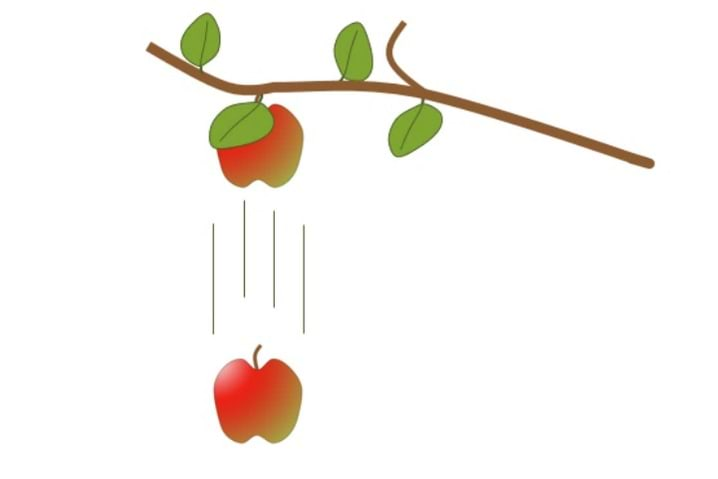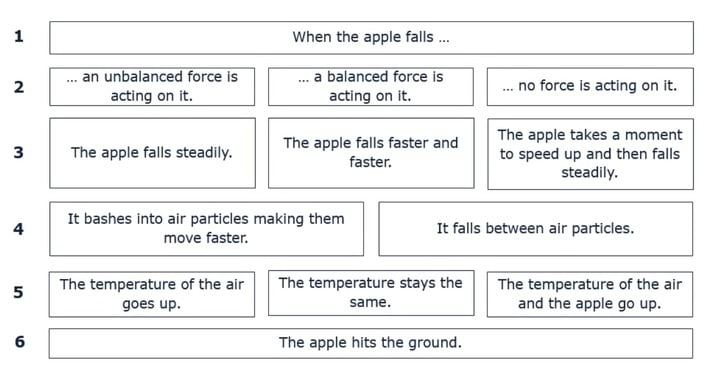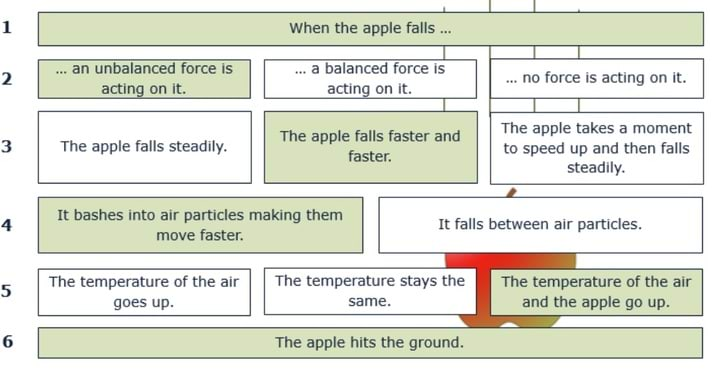Learning focus: | When a force makes things change it mechanically transfers energy between different energy stores. Friction transfers energy mechanically into a heat store of energy. |
Observable learning outcome: | Explain how energy is almost always transferred to the heat store of the surroundings |
Question type: | Diagnostic, explanation story |
Key words: | Energy store, energy transfer, force |
In teaching energy the BEST resources have adopted a framework based on ‘energy stores’ and ‘energy pathways’ which is advocated by, amongst others, (Boohan, 2014), (Millar, 2014) and (Tracy, 2014). As Millar (2014) says, this approach “is not perfect - but it is adequate and significantly better than [approaches] based on lists of ‘forms of energy’.” A clear guide to this approach can be found on the Institute of Physics’ website (Institute of Physics).
This question focuses on describing how energy is transferred. When explaining how energy is transferred, Tracy (2014) recommends that we focus on describing the processes and mechanisms involved. He suggests that trying to identify the ‘energy’ in each step is just a labelling exercise that can get in the way of a clear understanding of what is happening.
In this question ideas about force are used to explain the transfer of energy. Driver et al. (1994) identify several common misunderstandings that may confuse what students think will happen:
- if there is motion, there is a force acting
- if there is no motion, then there is no force acting
- there cannot be a force without motion
- if there is no force, there is no motion
- when moving the force is in the direction of the motion
- constant speed results from a constant force
A summary of the BEST approach to teaching energy can be found on the Best Evidence Science Teaching home page which is on the STEM Learning website (Fairhurst, 2018).
This task is intended for discussion in pairs or small groups. It is best done as a pencil and paper exercise.
Students should read the statements and follow the instructions on the worksheet. Listening in to the conversations of each group will often give you insights into how your students are thinking. Each member of a group should be able to report back to the class.
Feedback from each group can be used, with careful teacher questioning, to bring out a clear description or explanation of the science.
Differentiation
The quality of the discussions can be improved with a careful selection of groups; or by allocating specific roles to students in the each group. For example, you may choose to select a student with strong prior knowledge as the scribe, and forbid them from contributing any of their own answers. They may question the others and only write down what they have been told. This strategy encourages contributions from more members of each group.
NB in any class, small group discussions typically improve over time and a persistence with this strategy is often very successful in the medium to long term.
An unbalanced force acts downwards and accelerates the apple towards the ground.
Some students may think that as the apple, at that instant, is not moving there is no force or a balanced force acting on it.
On line 3, some may think that to a steady force of gravity keeps the apple falling at a steady speed. This can be because they are applying their everyday experiences (e.g. the constant push of a car engine) to an unfamiliar situation. The last answer on this line is another example of applying everyday experience because it describes how an apple can ‘appear’ to fall.
There are tens of quintillions (1018) of particles in one cubic centimetre of air, but when asked to estimate the separation of two air particles many students guess at several millimetres or even centimetres. This can lead to the idea that an apple can fall between particles of air.
Because temperature increases in this example are very small, students may not recognise any change. Topic PMA1: Heating and cooling considers this more thoroughly. When there is friction between two objects or materials, friction acts on both making their particles speed up and their temperatures increase.
If students have misunderstandings about how the apple transfers energy when it falls, a suitable response could be for students, after a classroom discussion, to be given the opportunity to explain the scientific way of thinking in their own terms. Or it could give students the opportunity to apply the scientific thinking to a new situation.
The following BEST ‘response activities’ could be used in follow-up to this diagnostic question:
- Response activity: Energy transfers circus
- Response activity: Steady speed
Boohan, R. (2014). Making sense of energy. School Science Review, 96(354), 11.
Driver, R., et al. (1994). Making Sense of Secondary Science: Research into Children's Ideas, London, UK: Routledge.
Fairhurst, P. (2018). Teaching Energy. [Online]. Available at: https://www.stem.org.uk/best-evidence-science-teaching.
Institute of Physics. Supporting Physics Teaching (SPT): Energy [Online]. Available at: http://supportingphysicsteaching.net/EnHome.html [Accessed July 2018].
Millar, R. (2014). Teaching about energy: from everyday to scientific understandings. School Science Review, 96(354), 6.
Tracy, C. (2014). Energy in the new curriculum: an opportunity for change. School Science Review, 96(354), 11.


